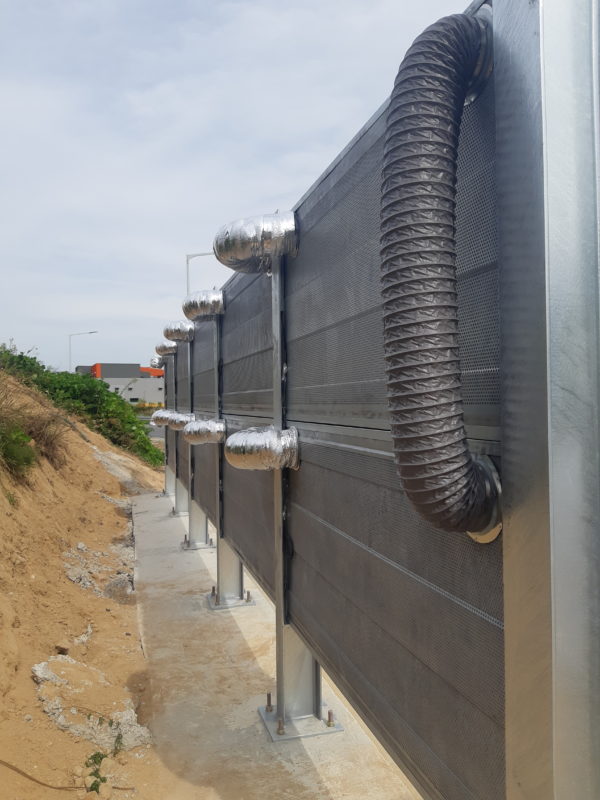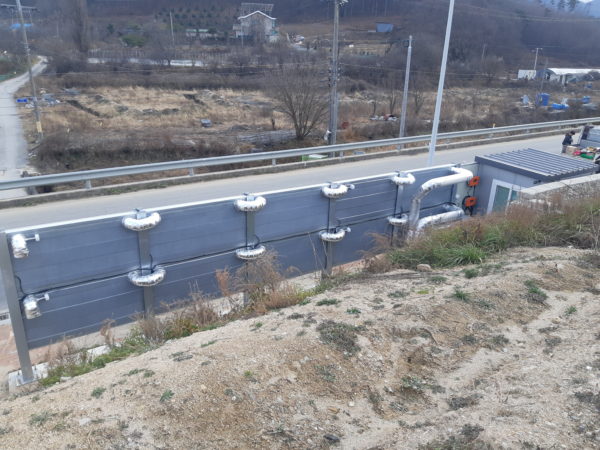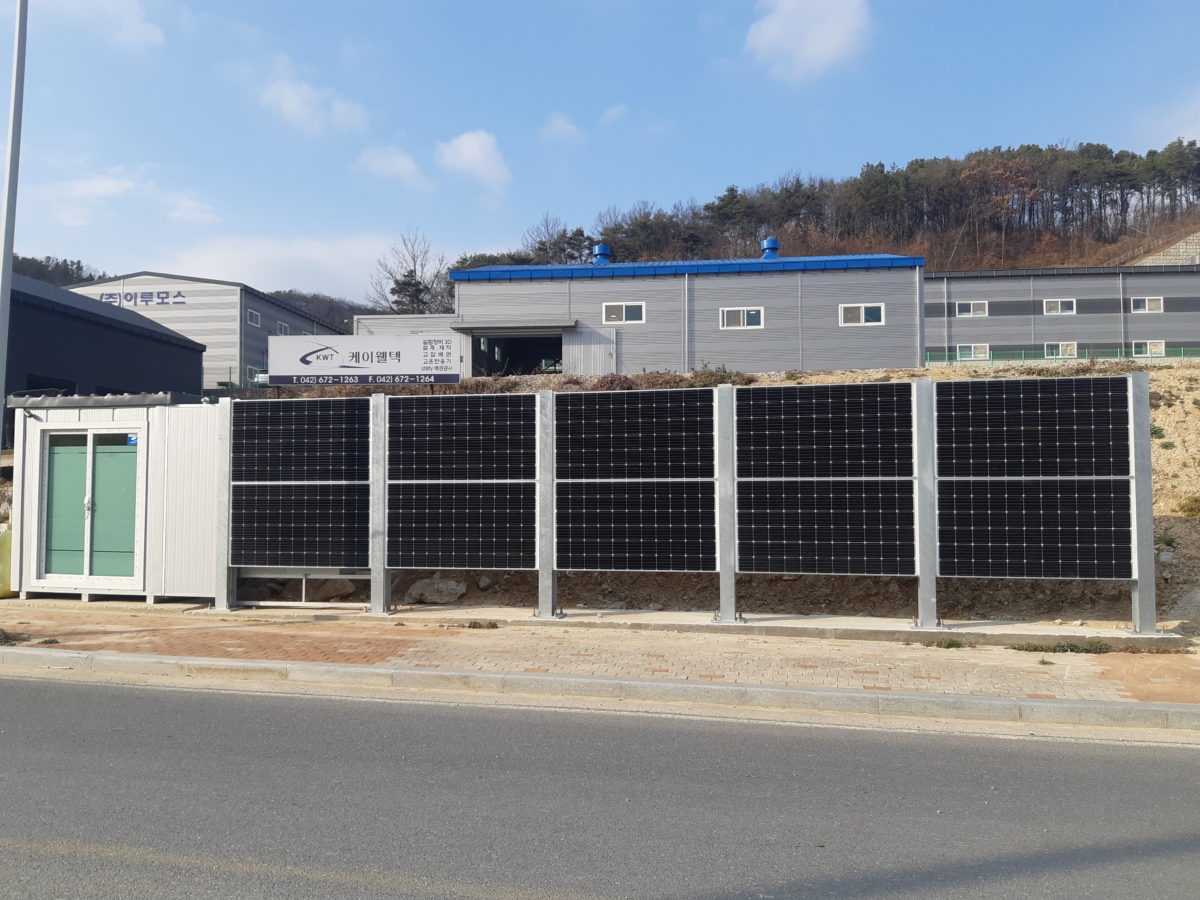Scientists from the Korea Institute of Energy Research (KIER) have developed a photovoltaic-thermal noise barrier that could be used to replace conventional soundproof walls to reduce traffic noise.

Image: Korea Institute of Energy Research (KIER)
The 3 kW pilot noise barrier in Gyeryong, South Korea, went into operation in December. It integrates PV modules, solar-thermal collectors and airflow within the system to ensure that excess heat from the PV panels is conveyed to the solar collectors, reducing the PV system's operating temperature.
In the proposed configuration, the PV modules are responsible for power generation. The sound-absorbing material embedded in the system collects heat and absorbs sounds, while the thermal collectors recover heat and provide structural strength.
The system has a sound absorption performance of 0.83, which compares to 0.7 in standard noise barriers. Its sound insulation performance at 1000 Hz was found to be 37.1 decibels (dB), which compares to around 30 dB in conventional systems.
The sound insulation performance was based on the KS F ISO 10140-2 standard and the sound absorption performance on the KS F 2805 standard.
Popular content

Image: Korea Institute of Energy Research (KIER)
Due to an operating temperature that was 15 C lower than that of a reference system without the airflow technology, the PV system was found able to produce around 6% more electricity. The heat produced by the solar thermal modules was able to produce 400Wt perm². According to the researchers, this heat could be used for heating, ventilation, and preheating of hot water in public places such as waiting rooms, public toilets and restrooms.
“The total installation length of noise barriers in Korea is about 3,200 km,” said KIER researcher Eun-Cheol Kang. “The multifunctional PVT noise barrier system market is expected to be applicable to more than 1,000 km even considering the shading among them. I think our soundproof wall technology can be a good alternative.”
The research institute said it has already secured a patent for the new tech, with three more pending. The concept was developed with the support of South Korea's Ministry of Land, Infrastructure, and Transport.
This content is protected by copyright and may not be reused. If you want to cooperate with us and would like to reuse some of our content, please contact: editors@pv-magazine.com.



Would have thought that a liquid would have conveyed the heat more efficiently.